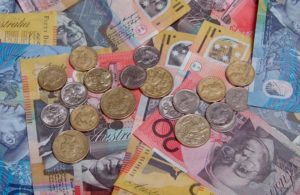 Australian dollar traded lower against its US counterpart on Tuesday, as a technical indicator signaled a reversal and despite that Australian trade balance produced a lesser than projected deficit in November.
Australian dollar traded lower against its US counterpart on Tuesday, as a technical indicator signaled a reversal and despite that Australian trade balance produced a lesser than projected deficit in November.
AUD/USD reached a daily low at 0.8912 at 5:05 GMT, after which consolidation followed at 0.8924, falling 0.49% for the day. Support was likely to be received at January 3rd low, 0.8885, while resistance was to be encountered at January 3rd high and also the highest point since December 12th, 0.9004.
Stochastics, which examine the velocity of price movements, indicated that the Australian dollar may have risen too rapidly, as the K-line rose to 78 yesterday, exceeding the level of 70, which is considered by traders as a signal that a currency may be overbought.
Meanwhile, a report by the Australian Bureau of Statistics showed that the deficit on Australias trade balance narrowed to 0.118 billion AUD in the month of November, while the median estimate of experts showed that the deficit figure will contract less, to 0.250 billion AUD. Octobers deficit figure has been revised up to 0.358 billion AUD from 0.529 billion AUD previously.
The yield on Australian 10-year government bonds fell six basis points, or 0.06 percentage point, to reach 4.32% today, after climbing as high as 4.41% on Monday, or the highest level since December 9th.
Australian dollar will probably close the year at 87 U.S. cents, according to the median forecast of analysts participated in a survey by Bloomberg News.
Reserve Bank of Australia (RBA) Governor Glenn Stevens said in a parliamentary testimony in December that an exchange rate above 90 U.S. cents was “unlikely to be a sustainable equilibrium for us over time.” Stevens also said there were signs that low interest rates are spurring consumer spending in the country.
“We’re looking for the Aussie to depreciate through the year,” said Emma Lawson, a senior currency strategist at National Australia Bank Ltd. in Sydney, cited by Bloomberg News. “We’re looking for the RBA to ease policy further.”
At the same time, the US dollar came under pressure yesterday after a report by the Institute for Supply Management (ISM) revealed that activity in the US sector of services unexpectedly weakened in December. The corresponding non-manufacturing PMI fell to a reading of 53.0 last month from 53.9 in November, short of analysts’ projections of an increase to 54.5.
A separate report by the US Census Bureau showed that nation’s factory orders increased 1.8% in November on a monthly basis, following October’s 0.5% drop, while analysts had anticipated that the indicator will climb 1.7% in November.
Later in the day the United States is to report on its trade balance, with the median estimate by experts pointing to a lesser deficit figure, 40.000 billion USD in November, as a month ago nations deficit reached 40.641 billion USD.
Elsewhere, the Aussie was lower against the euro, with EUR/AUD cross advancing 0.38% on a daily basis to trade at 1.5260 at 7:48 GMT. AUD/NZD pair was losing 0.13% to trade at 1.0806 at 7:48 GMT.





